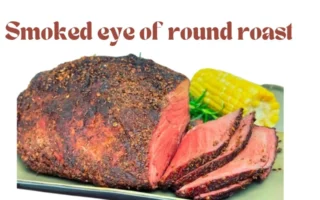Batch cooking is a practical approach to meal preparation, allowing you to save time, reduce stress, and enjoy delicious, home-cooked meals throughout the week. Whether you’re cooking for a large family or looking to simplify your meal planning, understanding which meals and recipes are best suited for batch cooking can make a significant difference. This guide will explore the most effective dishes for batch cooking, tips for scaling recipes, and how to ensure your batch-cooked meals remain flavorful and satisfying.
What Is Batch Cooking?
Batch cooking involves making large quantities of food in one go and storing it for later use.This method can be a game-changer for busy individuals and families, providing convenient meal options and minimizing the need for daily cooking.
Why Batch Cooking?
Benefits of Batch Cooking
- Save Time: Prepare meals in advance to avoid daily cooking and streamline your grocery shopping.
- Save Money: Buying ingredients in bulk and reducing food waste can help you stick to your budget.
- Reduce Stress: Eliminate the daily hassle of meal planning and cooking.
- Enjoy Variety: Experiment with new recipes and maintain a diverse menu.
- Efficient Use of Ingredients: Make the most of seasonal produce and reduce waste.

Meals That Excel in Batch Cooking
1. Curries
Why They Work Well:
- Flavor Development: Curries often taste even better the next day as the flavors meld together.
- Freezing Friendly: Most curries freeze well and can be easily reheated.
Popular Curry Recipes for Batch Cooking:
- Chicken Curry: Use a blend of spices and coconut milk for a rich, flavorful dish.
- Vegetable Curry: A mix of seasonal vegetables and chickpeas makes for a nutritious meal.
Batch Cooking Tips:
- Prepare in Large Batches: Make enough to last a week or more.
- Portion Out: Store in airtight containers for easy reheating.
2. Casseroles
Why They Work Well:
- Easy to Prepare: Most casseroles require minimal prep and can be baked in large dishes.
- Freezing Friendly: They freeze and reheat well, maintaining their taste and texture.
Popular Casserole Recipes for Batch Cooking:
- Lasagna: Layers of pasta, meat, and cheese create a hearty meal.
- Chicken and Rice Casserole: A comforting dish with proteins and veggies.
Batch Cooking Tips:
- Layer Carefully: Ensure even cooking and consistent texture.
- Use Freezer-Safe Containers: Store individual portions for easy access.
3. Soups
Why They Work Well:
- Flavor Improvement: Soups often improve in flavor after a day or two.
- Versatile Ingredients: Adapt recipes based on what you have on hand.
Popular Soup Recipes for Batch Cooking:
- Chicken Noodle Soup: Classic comfort food that’s easy to make in large quantities.
- Vegetable Soup: A great way to use up leftover veggies and create a nutritious meal.
Batch Cooking Tips:
- Cook in Large Pots: Make enough to last several meals.
- Cool Before Freezing: Allow soup to cool before transferring to freezer-safe containers.
4. Rice Dishes
Why They Work Well:
- Versatility: Rice can be used in various dishes and is a great base for many meals.
- Freezing Friendly: Cooked rice freezes well and can be reheated quickly.
Popular Rice Dishes for Batch Cooking:
- Fried Rice: A great way to use leftover vegetables and proteins.
- Rice Pilaf: Flavored rice that can be served as a side or main dish.
Batch Cooking Tips:
- Cook Extra Rice: Prepare a large batch and use it throughout the week.
- Store in Portions: Keep rice in airtight containers to maintain freshness.
5. Slow Cooker Meals
Why They Work Well:
- Set and Forget: Prepare ingredients in the morning, and the slow cooker does the rest.
- Flavorful Results: Long cooking times help develop deep flavors.
Popular Slow Cooker Recipes for Batch Cooking:
- Beef Stew: Tender beef and vegetables in a savory broth.
- Pulled Pork: Flavorful and versatile, perfect for sandwiches or tacos.
Batch Cooking Tips:
- Use a Large Slow Cooker: Opt for a larger size to make enough for multiple meals.
- Store Properly: Allow meals to cool before storing in individual portions.
Tips for Scaling Up Recipes
When scaling up recipes for batch cooking, keep these tips in mind:
1. Use Weight Measurements
- Why: Scaling recipes by weight ensures accuracy and consistency.
- How: Convert recipes from volume measurements to weight for better results.
2. Gradual Scaling
- Why: Scaling up incrementally helps test if the flavors and textures remain consistent.
- How: Start by increasing the recipe by 50% before doubling or tripling.
3. Taste as You Go
- Why: Seasonings can intensify when recipes are scaled up.
- How: Add spices and seasonings gradually, tasting frequently to avoid overpowering flavors.
4. Avoid Overcrowding
- Why: Overcrowding can affect cooking times and result in uneven cooking.
- How: Cook in batches if necessary, ensuring each batch has enough space.
Recipe Comparison Table
| Recipe Type | Why It Works Well | Batch Cooking Tips |
| Curries | Flavor improves over time; freezes well. | Prepare in large batches; portion out. |
| Casseroles | Easy to bake in large dishes; freezes well. | Layer carefully; use freezer-safe containers. |
| Soups | Flavors improve; versatile ingredients. | Cook in large pots; cool before freezing. |
| Rice Dishes | Versatile; freezes well. | Cook extra; store in portions. |
| Slow Cooker Meals | Set and forget; develops deep flavors. | Use a large slow cooker; store in portions. |
FAQs
What are the best containers for batch cooking?
Airtight, freezer-safe containers are ideal for storing batch-cooked meals. Glass containers are a great choice as they are durable and can be used in the microwave or oven.
How long can I store batch-cooked meals?
: Most batch-cooked meals can be stored in the refrigerator for 3-4 days. For longer storage, freeze meals in airtight containers for up to 3 months.
Can I batch cook for special diets (e.g., gluten-free, vegan)?
Yes, batch cooking is versatile and can accommodate special diets. Simply choose recipes that align with your dietary needs and adjust ingredients accordingly.
How do I reheat batch-cooked meals?
:Reheat meals in the microwave, oven, or stovetop until they reach a safe temperature (165°F or 74°C). For frozen meals, thaw in the refrigerator before reheating.
Conclusion
Batch cooking is an excellent way to streamline your meal preparation, save time, and reduce stress. By focusing on recipes that work well in large quantities, such as curries, casseroles, soups, rice dishes, and slow cooker meals, you can ensure that your meals remain flavorful and satisfying. Implementing tips for scaling up recipes and choosing the right storage solutions will help you make the most of your batch cooking efforts. With a little planning and organization, you can enjoy delicious, home-cooked meals throughout the week with minimal daily effort.




